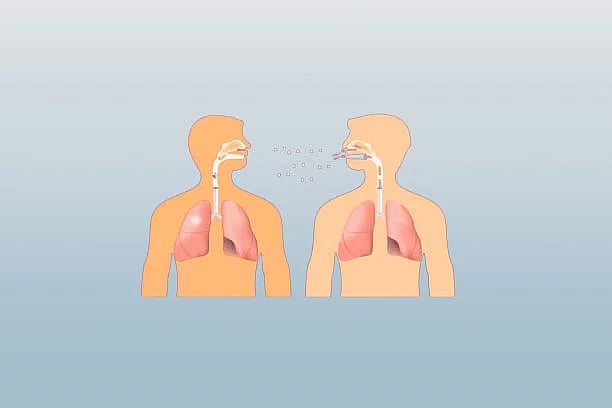Bangladesh still at high TB risk, 18 per cent cases not detected

According to the World Health Organisation (WHO)'s 2022 report, 82 per cent of suspected tuberculosis (TB) cases in Bangladesh are diagnosed and treated. And 18 per cent are not detected. Persons connected to the TB control programme say that these cases are remaining outside medical treatment. As all cases are not detected, Bangladesh is still on the list of high TB burden countries. Bangladesh is particularly behind in detecting TB in infants.
According to experts, one of the main reasons that Bangladesh still lags behind in eliminating TB is that all cases are not detected. People are reluctant to reveal that they have tuberculosis. This is out of shame, negligence and lack of awareness. Also, those who are working, do not want to skip work to go to a physician to diagnose their disease.
WHO's latest global tuberculosis report (2022), says that in the year 2021 a total of 42,000 persons died of TB in Bangladesh. According to estimates, around 375,000 persons contracted TB in the same year. Of the afflicted persons, 82 per cent were undergoing medical treatment. Of the suspected cases, 18 per cent were not diagnosed or brought under medical treatment.
Experts say, there is medical treatment for tuberculosis in the country. The government is providing medicine free of cost. Even so, the main cause behind the deaths is all cases not being detected and also lack of awareness.
Speaking to Prothom Alo recently, assistant director of Directorate General Health Services (DGHS)'s Tuberculosis Control Programme, Afzalur Rahman, said it difficult to diagnose TB in the case of infants because it is hard to get samples of their cough. Other tests have to be used to determine if they have TB. In recent times, the alternative method of detecting TB in children is by stool tests.
Tuberculosis is an infectious disease. The mycobacterium tuberculosis bacteria is responsible for this disease. Any organ of the human body other than the hair or nails can contract TB. However, in most cases it affects the lungs. TB germs are spread to other people through the affected person's sneezing and coughing.
TB is an air borne disease. The risks are higher for those in closer proximity to TB patients. That is why when a person is diagnosed with TB, those around the patient must also undergo tests
The National Tuberculosis Control Strategy Paper says that by 2025 the number of TB cases must be decreased by 75 per cent (as compared to 2015). In 2015 the number of TB deaths was 73,000. That means in the next two years this number must be reduced to around 18,000. By 2025, new incidence of TB must be cut by 50 per cent (compared to 2015). Bangladesh, however, is far from both targets.
Physicians say TB is an air borne disease. The risks are higher for those in closer proximity to TB patients. That is why when a person is diagnosed with TB, those around the patient must also undergo tests.
Persons connected to the TB control programme say that in order to meet the target, it is important to pay attention to increasing the rate of detecting TB cases, to ensure follow-up treatment of the diagnosed patients, to increase awareness at a community level and ensure proper training of health workers.
Infants with TB not being diagnosed properly
The National Tuberculosis Control Programme began after the independence of the country. From after 1994, every three years a team of local and international experts (TB related joint monitoring mission) evaluates this programme and submits their report to the government. It makes recommendations concerning the various TB-related sectors. The latest report was submitted in 2023.
A review of several reports of the joint monitoring mission reveals that infant's TB is not being diagnosed properly in the country. An estimation is drawn up of infants being infected with TB in relation to the country's population and prevalence of TB. This indicates that only 4 per cent of the infants with TB are detected. That means, 96 per cent of the infants with TB are not being diagnosed.
The 2019 report of the joint monitoring team discussed the matter of diagnosis and treatment of TB in infants. The report made several recommendations too. However, not much progress has been made in this connection.
When asked about this matter, director of the DGHS' TB control programme, Md Mahfuzur Rahman Sarkar, told Prothom Alo that diagnosing TB in infants under five years old is a global problem. But diagnosing infants with TB in the country has increased compared to before. Alongside government institutions, this task is also being carried out by icddr,b, BRAC and several other non-government organisations. As infants cannot express their own problem, awareness of parents must be increased.